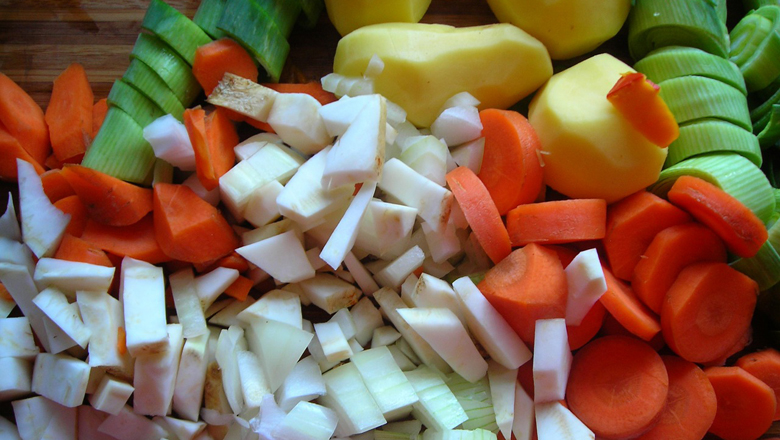
Your Tuesday Tip: Cooking from Root to Stalk

As a member of the clean plate club, I am not a fan of wasted food. As it is, CNN reports that 40% of all food in America is thrown away, up to 20 pounds per person per month on average in the United States alone. Admittedly, people toss food that spoils before they cook it and leftovers that never make it back to the table. What many don’t realize is that they often trash edible food that hasn’t expired – right from the cutting board and mixing bowl. It’s true: even if you clear your dish at every meal, you may be guilty of wasting pounds of food that never made it to the pot.
Personally, I have always had a problem with separating eggs because without a plan for the other half, that part of the egg joins the refuse in the garbage. I’ve even wasted perfectly good food while preparing produce. When an onion is cut properly for example, very little will go in the trash, but you can take it further. Even the crispy, flaky onion skin can find its place in your dish – as part of a vegetable stock. It turns out there are quite a few things you can do to minimize the amount of food that enters your garbage bin.
1. Make a stock from trimmings. I already mentioned this, but you might not realize how many things can become stock. You can freeze all of the scraps until you are ready and you can freeze the stock, too. If you want to make it now, consider pouring it into an ice cube tray and popping the ice cubes into a bag. This way, you can use as much or as little stock as you need in any given recipe. If you eat meat, don’t forget to add bones to your stock, too. Just make sure you follow proper cooling procedure to ensure food safety.
2. Get creative. Think about the composition of the trimmings you are throwing away; what are they similar to? Watermelon rinds, for example, are startlingly similar in texture to cucumbers. Why not peel and slice them to add to your salad? Potato peels can become potato chips when fried or baked with oil. If a vegetable has seeds, you may be able to roast them.
3. Extract all the flavor you can. Salt leftover scraps of tomato and drain over a sieve for fresh tomato juice for use in recipes. Steep the leftover stems from those tomatoes in your sauce for a rich flavor. Leaves from celery, carrots and fennel can garnish a dish well. The thin skins of citrus fruit can dry in the oven at 200 degrees for later use in stews and sauces.
4. Leaves and stalks are edible. I would never have thought the thick leaves around a cauliflower were edible, but it turns out that they are sweet and sauté or roast well. Further, you can do this with any leaf. For thick, ribbed leaves like those of chard or collard greens, braise them until tender. Broccoli stems can be peeled, seasoned and enjoyed.
5. Look for substitutes. You don’t have to separate that egg and waste half. Of course you can make two dishes at once, but you also don’t always have to use an egg. For egg whites you can substitute aquafaba, the liquid found in a can of beans.
(Image at top from Pixabay.)

























